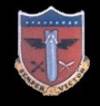| AWARD
OF THE DISTINGUISHED-FLYING-CROSS--By direction
of the President, under the provisions of the Act
of Congress, approved 2 July 1926 (Bull 8, WD 1926),
and persuant to authority delegated by Headquaters
United States Army Strategic Air Forces in letter,
file AG 323; subject: "Ddefinitions of Administrative
Responsibilities", dated 6 August 1945, announcement
is made of the award of the Distinguished-Flying-Cross
to the following named officers and enlisted men
of the 60th Bombardment Squadron, 39th Bombardment
Group.
For
extraordinary achievement while participating in
aerial flight 26 June 1945. These individuals were
members of the combat crew of a B-29 aircraft on
a highly successful reconnaissance mission to the
northernmost Japanese home island of Hokkaido. Knowing
well the dangers involved in undertaking a flight
of more than 4,500 miles from their Marianas Islands
base, a large portion of which was over hostile
waters and enemy territory, they courageously volunteered
to carry out this extremely difficult assignment.
The airplane returned safely to base twenty-two
and one half hours later after making a non-stop
flight of 4,650 miles. One of the longest combat
flights in history. Although navigational check
points were as much as a thousand miles apart over
great expanses of totally unfamiliar water and land;
winds of high volocity were met; the island of Hokkaido
was obscured by a heavy overcast, the navigator
performed his duties in such an exceptional manner
that the route to the target and return was flown
exactly as briefed. Because the fuel supply had
been closely calculated with reference to the distance
and duration of the flight, the expert work of the
flight engineer in connection with cruise control
and his other duites was instrumental in accomplishing
the assignment. The instrument specialist performed
an outstanding service in securing important and
much needed reconnaissance photographs. The overcast
above the target island by no means lessened the
difficulty of his work, and a camera malfunction
required that a part of the route be retraced that
pictures could be taken with hand cameras. In spite
of these obstacles, however, photographs of superior
quality and great usefulness were obtained. Throughout
this exceptionally long flight there were constantly
present with the long B-29 dangers from hostile
fighters and anti-aircraft defenses, weather and
mechanical malfunctions. The high courage and outstanding
professional skill displayed by each of these airmen
in securing valuable information reflect great credit
on himself and the Army Air Forces.
First
Lieutenant THOMAS A. BELL, Air Corps, United States
Army, as Airplane Commander.
Second
Lieutenant JOSEPH F. CALLAGHAN, Air Corps, United
States Army, as Navigator.
Second
Lieutenant ELMER C. JONES, Air Corps, United States
Army, as Radar Observer.
Master
Sergeant GEORGE W. BEAVER, JR., Air Corps, United
States Army, as Flight Engineer.
|





